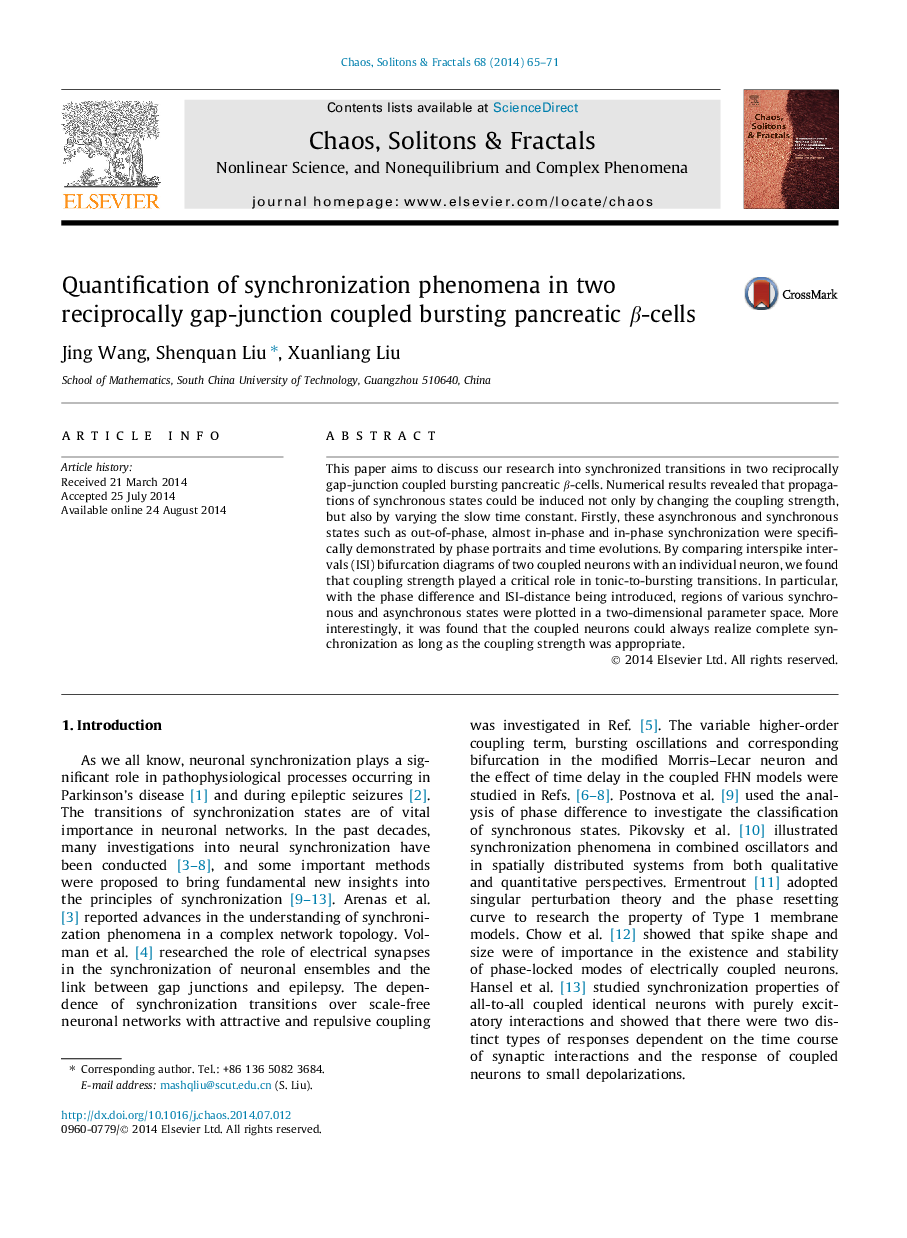| Article ID | Journal | Published Year | Pages | File Type |
|---|---|---|---|---|
| 1889260 | Chaos, Solitons & Fractals | 2014 | 7 Pages |
This paper aims to discuss our research into synchronized transitions in two reciprocally gap-junction coupled bursting pancreatic β-cells. Numerical results revealed that propagations of synchronous states could be induced not only by changing the coupling strength, but also by varying the slow time constant. Firstly, these asynchronous and synchronous states such as out-of-phase, almost in-phase and in-phase synchronization were specifically demonstrated by phase portraits and time evolutions. By comparing interspike intervals (ISI) bifurcation diagrams of two coupled neurons with an individual neuron, we found that coupling strength played a critical role in tonic-to-bursting transitions. In particular, with the phase difference and ISI-distance being introduced, regions of various synchronous and asynchronous states were plotted in a two-dimensional parameter space. More interestingly, it was found that the coupled neurons could always realize complete synchronization as long as the coupling strength was appropriate.
